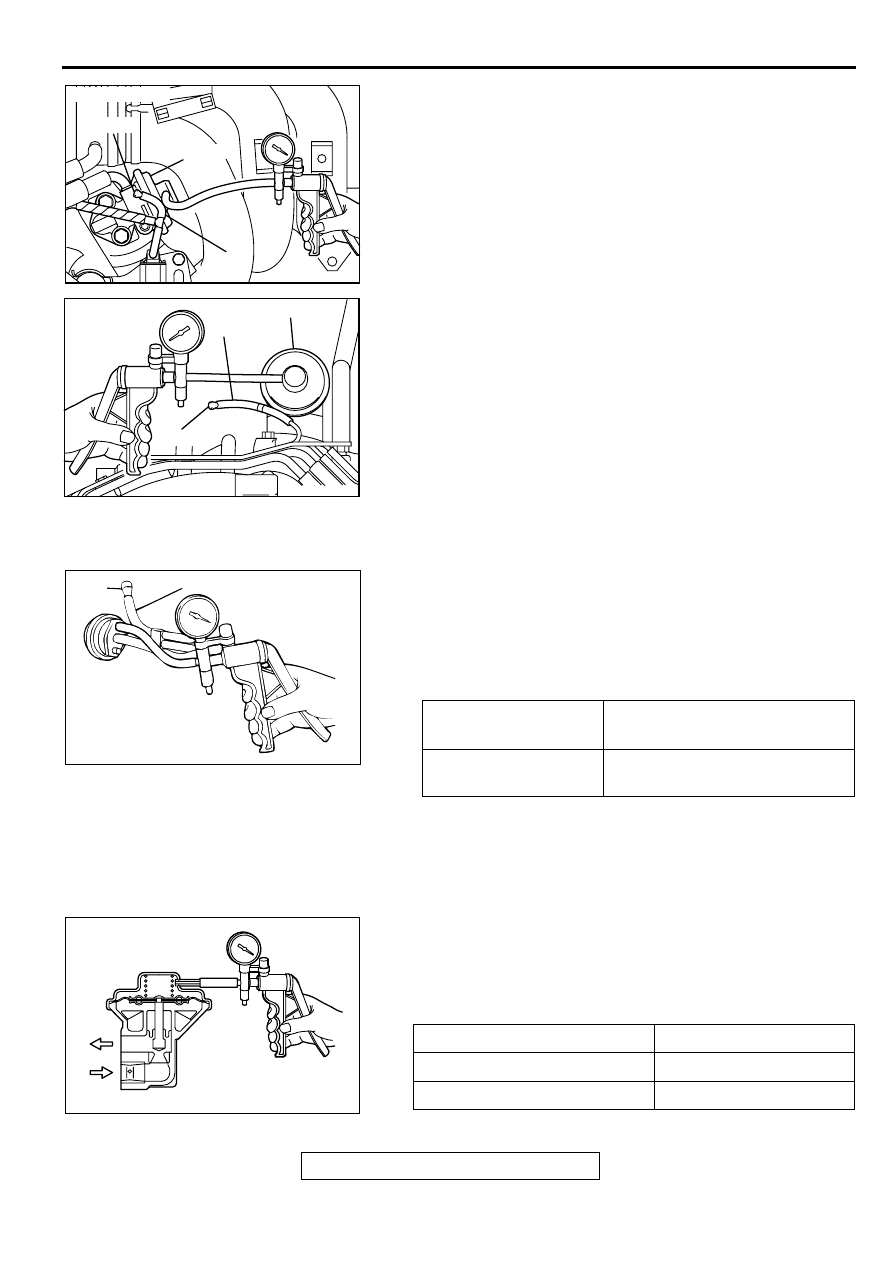Mitsubishi Eclipse / Eclipse Spyder (2000-2002). Service and repair manual - part 395

EMISSION CONTROL
TSB Revision
ENGINE AND EMISSION CONTROL
17-99
3. Stop the engine. Remove the Tee-fitting and the hand
vacuum pump.
4. Connect the hand vacuum pump directly to the EGR valve.
5. Start the engine and run at idle until warm.
6. The engine idling speed should be rough when a vacuum of
29 kPa (8.7 in Hg) or more is applied to the EGR valve.
7. If engine idles rough, EGR passage is open and the system
is OK. If engine idle is not rough, the EGR passage and the
valve must be checked for restrictions. Perform the EGR
valve check. Then repeat the EGR system check.
VACUUM CONTROL VALVE CHECK
M1173002700044
1. Disconnect the vacuum hose (white stripe) from the vacuum
control valve and connect the hand vacuum pump to the
vacuum control valve.
2. Plug the end of the removed vacuum hose.
3. Start the engine and run at idle.
4. Check the vacuum condition.
EGR VALVE CHECK
M1173002800041
1. Remove the EGR valve and inspect for sticking, carbon
deposits, etc. If found, clean with a suitable solvent so that
the valve seats correctly.
2. Connect a hand vacuum pump to the EGR valve.
3. Apply 67 kPa (20 in Hg) of vacuum, and check to be sure
that the vacuum is maintained.
4. Apply a vacuum and check the passage of air by blowing
through one side of the EGR passage.
AKX01318
PLUG
EGR VALVE
BLACK
AB
<2.4L ENGINE>
AKX01319 AB
EGR VALVE
BLACK
PLUG
<3.0L ENGINE>
ENGINE CONDITION
NORMAL VACUUM
CONDITION
Idling
Approximately 21.3
−
24.0 kPa
(6.3 - 7.1 in Hg)
AKX01320
WHITE STRIPE
PLUG
AB
VACUUM
PASSAGE OF AIR
5.3 kPa (1.6 in Hg) or less
Air is not blown out
29 kPa (8.7 in Hg) or more
Air is blown out
AKX00348